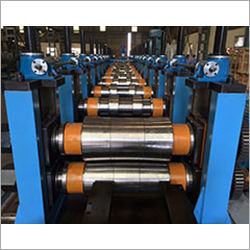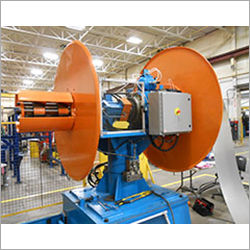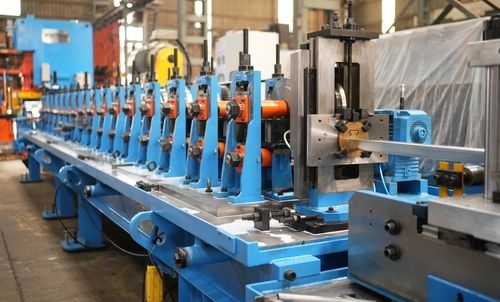Roll Tooling for Roll Forming Machine
Price 1500000 INR/ Unit
MOQ : 1 Unit
Roll Tooling for Roll Forming Machine Specification
- Type
- Roll Tooling Machine
- Material
- SS
- Computerized
- No
- Automatic Grade
- Automatic
- Color
- Blue And Silver
- Warranty
- 1 Year
Roll Tooling for Roll Forming Machine Trade Information
- Minimum Order Quantity
- 1 Unit
- Payment Terms
- Cash Advance (CA), Cash in Advance (CID)
- Delivery Time
- Days
- Main Export Market(s)
- Asia
About Roll Tooling for Roll Forming Machine
The Roll Tooling Machine that we put forward is designed for making replacing a set of roll tooling easier of our valued clients. This type of machine enables operators to test roll tooling on a virtual tooling tryout mill prior to built of the mill on the shop floor. Such a tooling equipment is ideally suitable for designing a range of complex profiles. Made of heavy duty roller and metal structure, the Roll Tooling Machine is easy to operate to its user-friendly control panel and ergonomic design.
Roll Form Process | What is a roll forming machine
Roll tooling for a roll forming machine refers to the set of dies, spacers, guides, and rollers made from durable materials like D2 tool steel that progressively shape a continuous metal strip or coil into a specific, complex cross-sectional profile. These custom-designed tools are arranged in a series of roll stands, with each stand performing incremental bending and forming as the metal passes through, ultimately producing a strong, precise, and finished product with a uniform shape.
Purpose and Function
Shape Formation: The primary purpose of roll tooling is to bend and form sheet metal into a desired profile, such as tubes, coils, and structural shapes.
Progressive Bending: The metal strip passes through multiple roll stands in a specific sequence. Each stand has contoured rolls and tooling that gradually alter the metal's shape, leading to the final, complex profile.
Product Customization: Tooling is custom-designed for each unique product profile, allowing manufacturers to create a vast array of shapes with varying dimensions and angles.
Strength and Accuracy: The cold-forming process results in a strong, work-hardened product with a precise, consistent final shape.
Components of Roll Tooling
Rolls/Roll Stands: Pairs of contoured rollers, mounted on roll stands, apply pressure and bend the metal as it moves through the machine.
Dies: Used to cut or punch specific shapes and features into the metal strip.
Spacers and Guides: Essential for maintaining the correct alignment and position of the strip, preventing it from wandering or misaligning.
Cutoff Tools: Employed to trim the formed profiles to their exact desired lengths.
Punch and Stripper Plate: Used in conjunction with dies to create features and remove the formed part from the die.
Key Considerations
Material: High-durability materials like D2 tool steel are used due to the significant stresses involved in shaping other metals.
Design: A flower pattern (a sequence of profile cross-sections for each stand) is used to derive the roll contours, often validated with computer simulation.
Setup: Roll tooling setup is a detailed, multi-step process requiring precision in aligning rolls, setting gaps, and checking for issues like material thinning or wrinkling.
Customization: Tooling is highly customized to meet the unique production requirements and desired output of a specific manufacturing application.

Tell us about your requirement

Price:
Quantity
Select Unit
- 50
- 100
- 200
- 250
- 500
- 1000+
Additional detail
Mobile number
Email
More Products in Roll Forming Machine Category
Uncoiler/Decoiler Machine
Price 250000 INR / Unit
Minimum Order Quantity : 1 Unit
Warranty : 1 Year
Type : Roll Forming Machine
Automatic Grade : Automatic
Computerized : No
Industrial Roll Forming Machine
Price 60000 INR / Unit
Minimum Order Quantity : 1 Unit
Warranty : 1 Year
Type : Roll Forming Machine
Automatic Grade : Automatic
Computerized : No
 |
SAMCO MACHINERY INDIA PVT. LTD.
All Rights Reserved.(Terms of Use) Developed and Managed by Infocom Network Private Limited. |

 Send Inquiry
Send Inquiry


